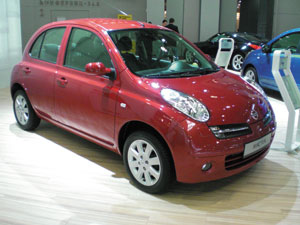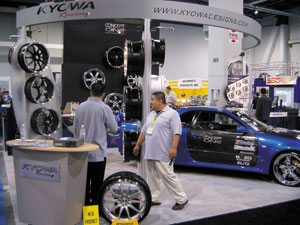Automakers Launch Low-priced Models to Boost Sales
2009/04/10 | By Michelle HsuThe ongoing global financial crisis and the reluctance of consumers everywhere to spend money have struck a heavy blow to auto markets everywhere. "Many consumers are taking a wait-and-see attitude now, as they expect auto prices to go down in the near future," said Chang Fang, chairman of the Guangzhou Automobile Industry Group Co. (GAIG).
Chang noted that most automakers are facing a dilemma: consumers will hardly buy new cars unless prices are cut, but a cut in prices would further erode the automakers' profits in this difficult time. In fact 60% to 70% of Chinese automakers suffered big losses last year, and some are even worried about surviving 2009. The struggle for survival leaves them little time to think about adjusting their pricing strategies.
Chang's GAIG is among the most profitable automakers in China, but even so it recorded a profit shrinkage of 200 million RMB in 2008.
Though auto sales have been on a continuous downward trend for almost a year and may continue dropping for several more months at least, automakers generally have not expressed any clear intent to make downward adjustments in their auto prices primarily because there has been no decline in the cost of major auto materials such as aluminum and rubber. Some materials have even become more expensive.
While consumers are waiting for price cuts and companies are hesitating to oblige, the subsidies that the Chinese government is providing to car buyers are expected to play a crucial role in revitalizing the auto market there. The "Auto Go-Countryside" policy, initiated in March, offers up to 20,000 RMB to any rural buyer who replaces his or her tricycle or van with a new car. The goal of the policy is to add at least one million units to China's total auto sales this year.
Taiwan's policy of subsidizing auto sales got started earlier, at the beginning of this year, with an N$30,000 sales-tax reduction for consumers who buy new cars to replace ones that are 10 years old or older. Automakers observe that the tax break has been good for them, with the demand for cars booming in the first two months of 2009. In reaction to the growing demand, some of the island's automakers have increased the weekly working hours of their employees-in sharp contrast to last year, when most of them cut their regular working hours because of the sharp drop in sales.

Though automakers have not cut the prices of their existing models, most are planning to offer much lower prices for new models to be launched this year or later. Honda, for example, is tagging its new hybrid Insight model at US$20,000 in the U.S. market, where the comparable Toytoa Prius goes for US$22,000.
Hybrids are commonly regarded as having great potential to dominate the world auto market in the near future, as they are touted as a solution to environmental concerns about the pollution caused by car emissions. While most major automakers have plans to introduce hybrid models in the next few years, most of the new offerings are expected to carry a much lower price than that of the market pioneer Prius.
Toyota itself is planning to launch a compact hybrid, the iQ, by 2012 as a much more affordable alternative to the Prius. Toyota is not alone in downsizing its models; Ford Motor, with the support of Canada's leading auto parts supplier Magna International, is scheduled to launch a compact plug-in hybrid by 2011. The plug-in will be especially suitable for commuters who have to drive only a short distance between home and workplace every day.
For most automakers, small cars indeed make a good alternative for appealing to price-conscious consumers, not only in the hybrid niche but for other kinds of automobiles as well.
Besides being much more affordable, smaller cars offer the advantage of helping drivers save a considerable amount of fuel cost. With the government subsidies being offered in Taiwan and China, a small car becomes even more affordable to middle-class consumers. In Taiwan, for example, a new small car with an engine displacement of 1,300cc to 1,500cc carries a sticker price of only NT$450,000 or so-and the subsidy cuts that down by another NT$30,000.

For years already, many carmakers have taken note of the trend toward small cars and have worked to develop downsized models. India's Tata group has introduced a mini car priced at just US$2,500, and in China numerous small models are being marketed under Chinese brand names.
Geely Automobile Holdings, one of the most active small-car producers in China, will team up with Taiwan's Yulon Motor group to develop compact models aimed at drivers in both Taiwan and China.
In its earlier years, Geely followed a low-price strategy and offered models costing under 30,000 RMB (around NT$150,000) each. "We made those cars in an attempt to expand our customer base to include lower-level consumers," said Geely Chairman Lee Shu-fu. He stressed, however, that low price doesn't necessarily mean "cheap." "Our goal," he added, "is to make cars which are safe, environmentally friendly, and energy-efficient as well as affordable for the general public."




